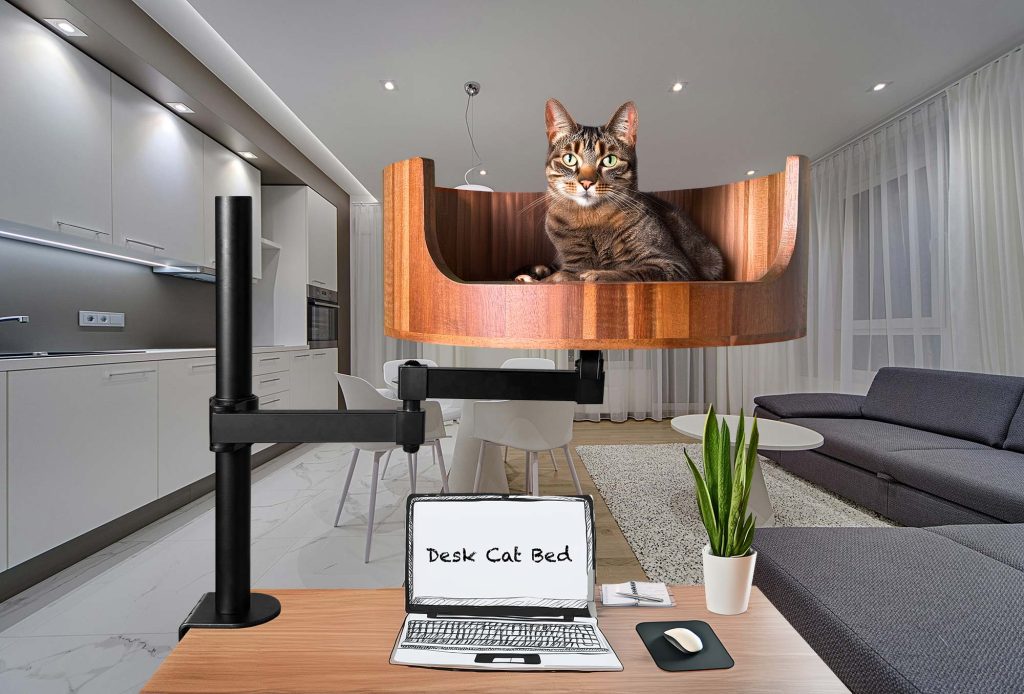Have you ever noticed your cat twitching and wondered what it means? Cat behavior can often be mysterious and confusing, but understanding why your feline friend is twitching can provide valuable insight into their health and well-being. In this article, we will delve into the various reasons why your cat may be twitching and what you can do to help them.
From Desk Cat Nest, a popular online resource for cat owners, comes a comprehensive guide to understanding your cat’s twitching. We will explore common causes of twitching in cats, including stress, excitement, and medical issues. Additionally, we will discuss how to differentiate between normal twitching behavior and more serious concerns that require veterinary attention. By the end of this article, you will have a better understanding of your cat’s behavior and be better equipped to care for their needs.
1. Twitching in cats can be a normal behavior caused by dreaming during REM sleep.
2. However, twitching can also indicate health issues such as seizures or neurological disorders.
3. It is important to monitor the frequency and duration of twitching episodes in your cat.
4. Consulting with a veterinarian can help determine the underlying cause of the twitching and provide appropriate treatment.
5. Creating a comfortable and stress-free environment for your cat can help reduce twitching episodes and promote overall well-being.
Causes of Twitching in Cats
Twitching in cats can be caused by a variety of factors, ranging from harmless to more serious conditions. One common cause of twitching is dreaming while asleep. Just like humans, cats can experience rapid eye movement (REM) sleep, during which they may twitch or even vocalize. Other potential causes of twitching in cats include stress, anxiety, or reactions to certain medications. In some cases, twitching may also be a symptom of neurological issues or underlying health problems, such as seizures or feline hyperesthesia syndrome.
Observing Twitching Behavior
To better understand your cat’s twitching behavior, it is important to observe and document when it occurs. Keep track of any patterns or triggers that may be associated with the twitching, such as certain times of day or specific activities. Pay attention to your cat’s body language and overall demeanor during these episodes, as well as any other accompanying symptoms. If the twitching becomes more frequent or intense over time, it may be a sign that further investigation is needed.
Seeking Veterinary Care
If you are concerned about your cat’s twitching behavior, it is important to seek veterinary care for a proper diagnosis. Your vet can conduct a thorough physical examination and may recommend additional tests, such as blood work or imaging scans, to rule out any underlying medical conditions. Depending on the cause of the twitching, your vet may recommend treatment options ranging from medication to behavioral therapy. By working closely with your vet, you can ensure your cat receives the appropriate care and management for their twitching behavior.
Desk Cat Nest FAQ
What are the benefits of using a Desk Cat Nest for my twitching cat?
A Desk Cat Nest provides a cozy and calming space for your cat to relax and feel secure, which can help alleviate stress and reduce twitching episodes.
Is the Desk Cat Nest suitable for all sizes of cats?
Yes, the Desk Cat Nest is designed to accommodate cats of various sizes and weights. The soft, cushioned interior provides a comfortable space for cats to curl up and rest.
How can the Desk Cat Nest help with my cat’s twitching behavior?
The comforting and enclosed space of the Desk Cat Nest can help your cat feel safe and secure, reducing anxiety and potential triggers for twitching. Plus, the elevated position can give your cat a sense of control over their environment.
Can I easily clean the Desk Cat Nest?
Yes, the Desk Cat Nest is made with durable and easy-to-clean materials. Simply remove the cushion and wash it according to the care instructions provided to keep the nest fresh and hygienic for your cat.
Will my cat use the Desk Cat Nest right away?
Every cat is unique, so it may take some time for your cat to become accustomed to the Desk Cat Nest. Encourage your cat to explore the nest by placing treats or toys inside, and provide positive reinforcement when they use it. Patience is key in helping your cat feel comfortable in their new space.
In conclusion, the Desk Cat Bed is a valuable choice for addressing your cat’s twitching symptoms. This innovative bed provides a comfortable and secure space for your feline friend to relax and alleviate stress, which can contribute to twitching episodes. The raised sides offer a sense of security, while the soft, plush cushioning promotes relaxation and proper spine alignment. By investing in a Desk Cat Bed, you are not only providing your cat with a cozy and calming retreat but also potentially helping to reduce twitching episodes and improve their overall well-being.


